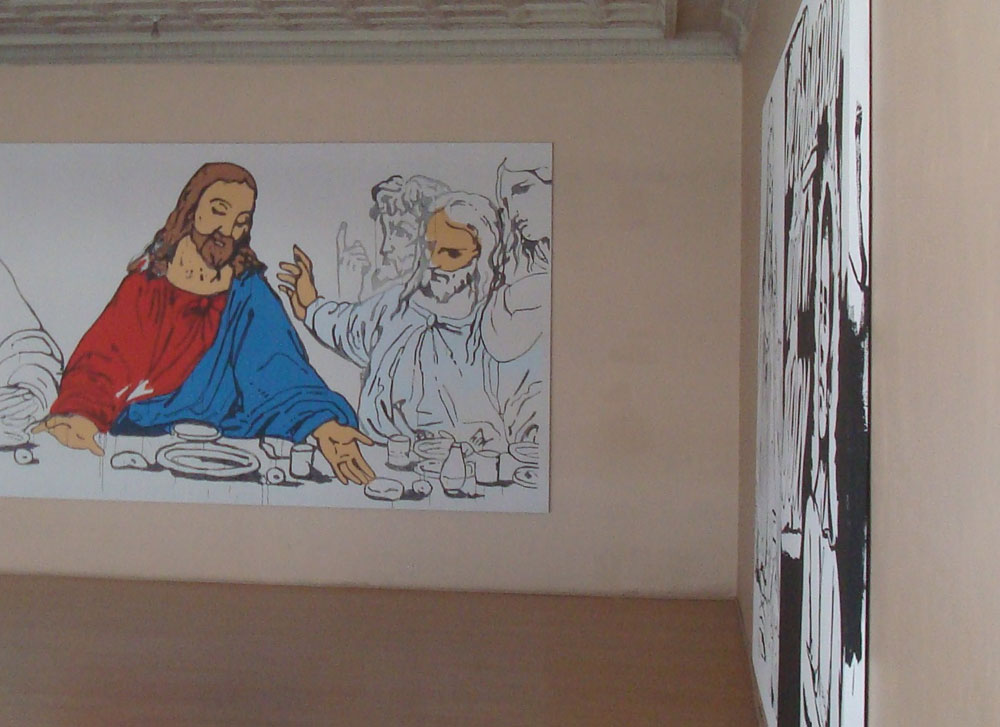
October 5, 2020; Hyperallergic, Baltimore Fishbowl, and the New York Times
“Selling art to support any need other than to build a museum’s collection fundamentally undermines the critically important relationships between museums, donors, and the public.” So wrote the Association of Art Museum Directors (AAMD) in a statement two years ago.
AAMD issued this statement to voice its strong dissent to the sale by the Berkshire Museum in Pittsfield, Massachusetts in 2018 of $53.25 million in art work to support its other museum programs in accord with that museum’s highly controversial $60 million Reinvention Plan.
Now, however, the Baltimore Museum of Art (BMA) is selling three art works—Andy Warhol’s “The Last Supper” (1986), Brice Marden’s “3” (1987-1988), and Clyfford Still’s “1957-G” (1957)—expected to fetch $65 million at a Sotheby’s auction. Only $10 million of the proceeds will be used for new artwork, but the sale has AAMD’s support.
As Valentina Di Liscia writes in Hyperallergic, “BMA’s move to sell the paintings is part of its ‘Endowment for the Future’ financial plan, developed during the museum’s six-month-long shutdown this year and in accordance with the loosening of AAMD’s guidelines.”
What caused AAMD’s guidelines to change? In a word, COVID-19.
In April, amid the pandemic, AAMD, recognizing the hit that the pandemic placed on earned revenues of the 227 art museums in its network, agreed to lift penalties assessed against museums deaccessioning art for purposes other than buying replacement art. At the time, the board of AAMD issued a statement, noting that for a two-year period extending until April 10, 2022, an institution may use the proceeds from deaccessioned works of art to support the direct care of the museum’s collection.
The statement added:
To use the proceeds from deaccessioned works of art for this purpose, the museum must have in place a board-approved policy outlining what expenses it considers as direct care, and the policy must be publicly accessible (e.g., posted to its website). This temporary approach is not intended to incentivize deaccessioning or the sale of art, only to provide additional flexibility on the use of the proceeds from art that may be sold. AAMD’s longstanding principle that the proceeds from deaccessioned art may not be used for general operating expenses remains in place.
Sign up for our free newsletters
Subscribe to NPQ's newsletters to have our top stories delivered directly to your inbox.
By signing up, you agree to our privacy policy and terms of use, and to receive messages from NPQ and our partners.
In Baltimore’s case, the museum is using the sale of art for three objectives. Ten million dollars will be funneled into the museum’s acquisition fund to acquire more artworks by women and artists of color, $500,000 will support museum equity planning, and the remaining $54.5 million will fund staff.
Funding staff might seem like support for operations, but the endowment structure allows BMA to satisfy AAMD guidelines. As Di Liscia details, the $54.5 million will be used to endow a fund that generates $2.5 million a year “to support salaries for 46 staff caring for the collection, including curators, registrars, conservators, preparators, art handlers, administrative staff, and fellows.” Part of the use of these funds, explains Hilarie Sheets in the New York Times, is to allow for funding to achieve greater pay equity among staff—the museum is committing to support “pay increases of 3 percent to 48 percent rolling out incrementally over the next three years.”
Ed Gunts, writing for Baltimore Fishbowl, notes that the BMA will also draw approximately $590,000 annually to eliminate fees for its special exhibitions and public programs and to support extending evening hours to 9 pm one night a week.
The BMA is the second institution to take advantage of the change in AAMD policy. Last month, the Brooklyn Museum was the first, selling 12 paintings at Christie’s to generate a $40 million endowment that will provide $2 million a year to cover collection care costs.
However, the Brooklyn Museum had long suffered financially. By contrast, notes Sheets, “The Baltimore Museum has a balanced budget. With some creative juggling of revenue streams, it intends to use its $65 million windfall to help advance salary increases across the board, invest in diversity and inclusion programs, offer evening hours, and eliminate admission fees for special exhibitions.”
Not all support the museum’s action. Brenda Richardson, a former BMA curator who acquired the Warhol painting that is being sold for the museum, tells the Washington Post that she is “horrified” by the news. Kristen Hileman, a former senior curator, speaking of the Warhol work specifically, tells the Post, “It took courage and conviction for Brenda Richardson to center the discourse of contemporary art at the BMA around a queer artist in the late 1980s and early ’90s.”
Di Lisica notes that, “Per the BMA’s website, there are currently 27 works by Warhol and 17 works by Marden in its collection (excluding the deaccessioned pieces); however, there are no other works by Still in its inventory.”
Most importantly, BMA to date has weathered the pandemic without laying off or furloughing staff. This move helps ensure that it can continue to do so. As Di Liscia observes, at a time when many art museums, even wealthy art museums like New York City’s Metropolitan Museum of Art, are laying off staff, BMA is “heeding the call to put its human resources above its material ones.”—Steve Dubb













